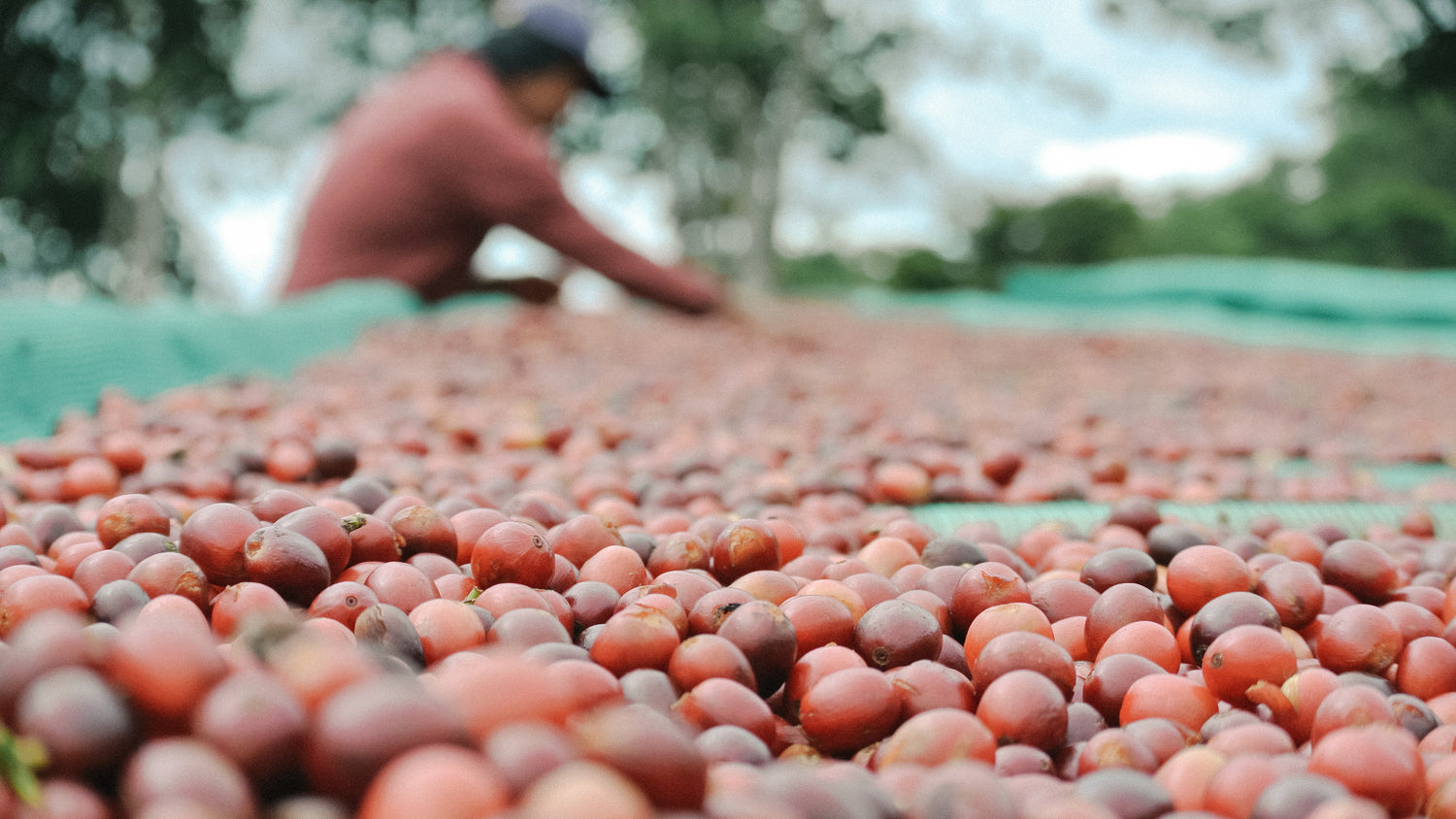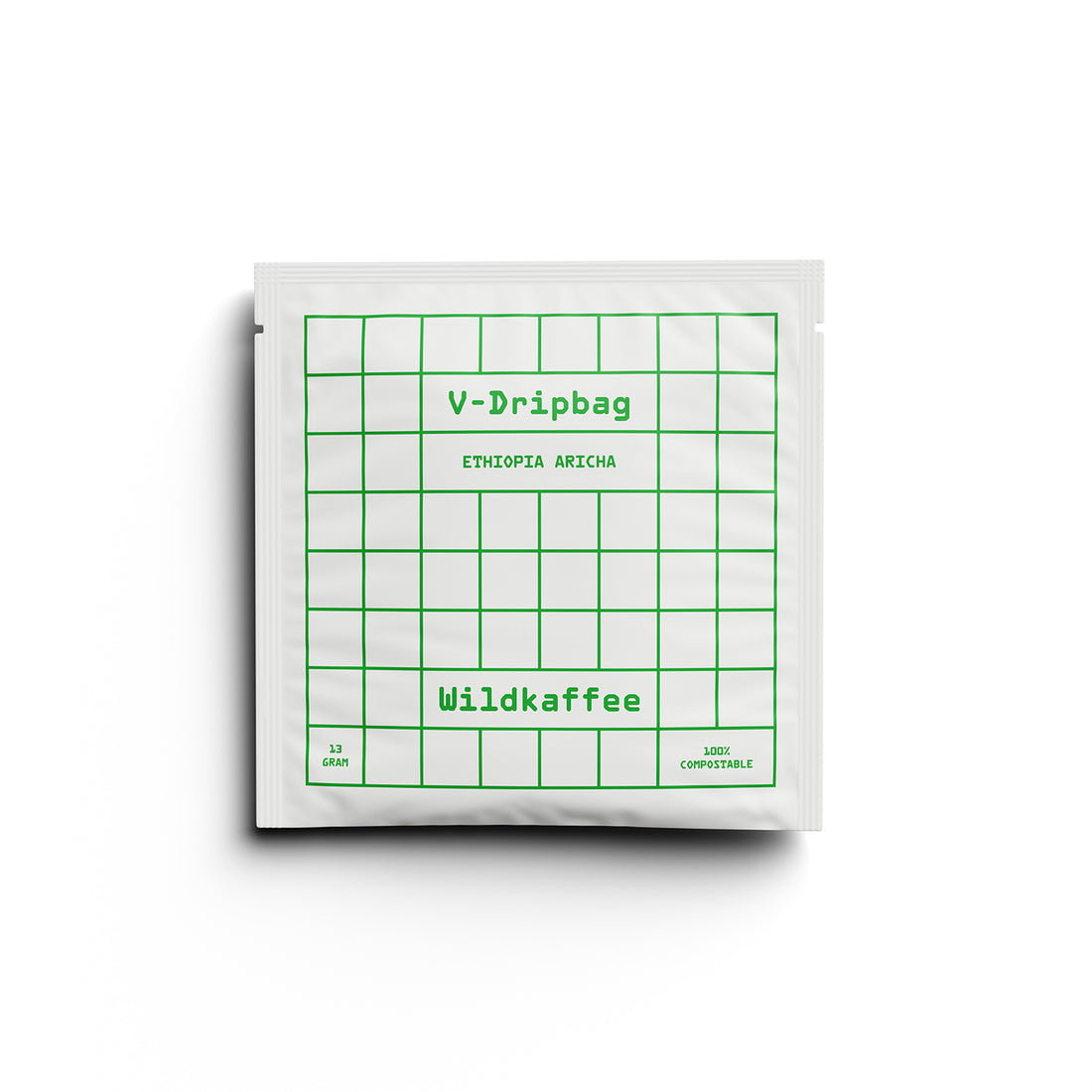The coffee cherry – structure and special features
The coffee cherry is about the size of a cherry, ripens on bushes and consists of several layers:
- Fruit skin (exocarp)
- pulp (mesocarp)
- Mucus layer (mucilage)
- Parchment skin (endocarp)
- Silverskin
- Bean (usually two per fruit)
To make the beans accessible, these layers must be carefully removed.
Harvesting methods – the first step to the bean
Typically, a single coffee bush contains all stages of a coffee cherry, from ripe to medium-ripe to unripe. Therefore, harvesting coffee cherries is still mostly done by hand. Furthermore, many coffee plantations are located on rough or steep terrain, making it impossible to use machinery. However, in some countries, such as Brazil, mechanical harvesting is also possible.
Hand picking

Only ripe, red cherries are selectively picked by hand, allowing green cherries to ripen further and be harvested later (third wave and specialty coffee). This is considered the highest quality method, which leads to higher prices because many hands or labor are required to harvest coffee this way.
Hand harvesting (stripping)
Here, too, the harvest is still done by hand, but all the cherries on a branch are stripped, thus collecting both ripe and unripe fruit. Stripped coffee lots, while inexpensive, are also of inconsistent quality, as the ratio of ripe, unripe, and overripe fruit is never equal.
Mechanical harvesting
During mechanical harvesting, the machines shake the coffee bushes, harvesting any cherries that fall. This allows for more coffee to be harvested in a shorter time, but still results in a mix of ripe, slightly ripe, and unripe fruits.
Three processing methods – the path to the raw bean
After the harvest, the next step is decided: dry, wet, or semi-dry processing? Or something completely new? Below, we briefly explain the three classic coffee processing methods.
Dry processing (natural)
Dry processing is the oldest method for roasting coffee. The whole cherries are spread out on concrete or paved surfaces and dried until the "beans" inside the fruit can be easily removed. This usually takes between three and five weeks. Typically, coffees from Brazil, Ethiopia, or India (Robusta) are processed naturally. This method is ideal for warm, dry growing regions. It produces a fruity and sweet coffee.
Wet processing (washed)
For wet processing, the beans are first washed in water tanks, pre-sorted, and then sent through a pulper (a machine that squeezes the pulp from the beans). What remains are the beans, covered in mucilage and parchment. These are then placed in a fermentation tank, where they are loosened and made washable through a fermentation process. The process takes between 12 and 36 hours before the green coffee is dried in large drying areas for 10 to 15 days. This process brings out the flavor and subtle notes of the coffee in a targeted and, above all, clear manner. Washed coffee is usually produced in the Latin American highlands, but washed coffee is also frequently processed in parts of Africa such as the Guji zone in Ethiopia or Rwanda.

Semi-dry processing (Honey or Pulped Natural)
This processing method is a hybrid of dry and wet processing. As much of the pulp as possible is mechanically removed from the cherry, and then the "beans" are dried in the sun. They are turned regularly. A sticky layer (mucilage) surrounds the beans, which can cause them to rot if not treated properly. Regular checks are also carried out to ensure no fermentation has occurred. Semi-dry coffee is known for its strong, spicy flavors with a full body. Thanks to the drying process, these characteristics are further paired with a slight sweetness.
Further processing methods
There are now many other processing methods, such as must, carbonic, aerobic or anaerobic fermentation, etc. This allows coffee producers or processors, such as LOST ORIGINS COFFEE LAB , to specifically enhance or diminish certain flavor profiles present in the cherries.
However, all of these new processing methods are based in some way on one of the classic methods. The cherries are fermented either with or without the pulp and then dried until they reach the right moisture/dryness.
Further steps after processing
Once the green coffee has been processed—that is, fermented or otherwise processed—it goes through several stages before being exported or sold. The most important thing is to achieve a certain level of dryness so that it doesn't spoil on the long journey to roasters in Europe, North America, Asia, etc.
Drying
The beans are dried on drying beds, floors or in drum dryers to the desired moisture level - this is around 12% residual moisture.
Hulling (peeling)
Removal of the final layers (parchment and silver skin). However, parchment coffee is also available for purchase, where this process step is omitted. However, this must also be clearly labeled.
Sorting and grading

By size, weight, and quality. Many coffee farmers perform this process after the harvest. Coffee cherries are sorted mechanically or even by hand according to ripeness and quality. After processing, the coffee can then be sorted again for defects. The Specialty Coffee Association has defined exactly how many defects a coffee is allowed to have to qualify for a certain quality class.
Export as green coffee
Raw coffee or green coffee (so called because unroasted coffee beans are slightly greenish) is either traded on the stock exchange or through direct trade . The latter has the advantage that the coffee roaster gets to know the producers personally and there are no middlemen who also want to make a profit. This means more money flows to the coffee farmers, who not only can live better but can also invest more intensively in coffee cultivation. This inevitably leads to higher quality coffee. Exchange-traded coffee, on the other hand, is often sold at lower prices on the world market and often ensures that the status quo is maintained. This means that the coffee farmers bear all the responsibility but earn little to nothing. We don't want that, which is why we only process directly traded coffee.
Why is processing so crucial?
That's easy to answer, because the processing method affects the quality and taste of the coffee. In other words, each processing method influences the following factors:
- Taste: Fruitiness, clarity, sweetness, body
- Quality: Uniformity, purity
- Sustainability: Water consumption and energy requirements
Conclusion
The journey from the coffee cherry to your cup isn't a short one. Cultivation, harvesting, processing, shipping, and much more all take time. However, the most important thing for you as a coffee connoisseur is transparency. You should know where the coffee was grown, the name of the farmer, how it was processed, and so on. With us and many other artisanal roasters, you'll find this information on the packaging. With many industrial roasters, however, you're lucky if the country of origin is listed on the packaging. So take a close look at the packaging – the more information about the origin, the better for you and your coffee enjoyment.




